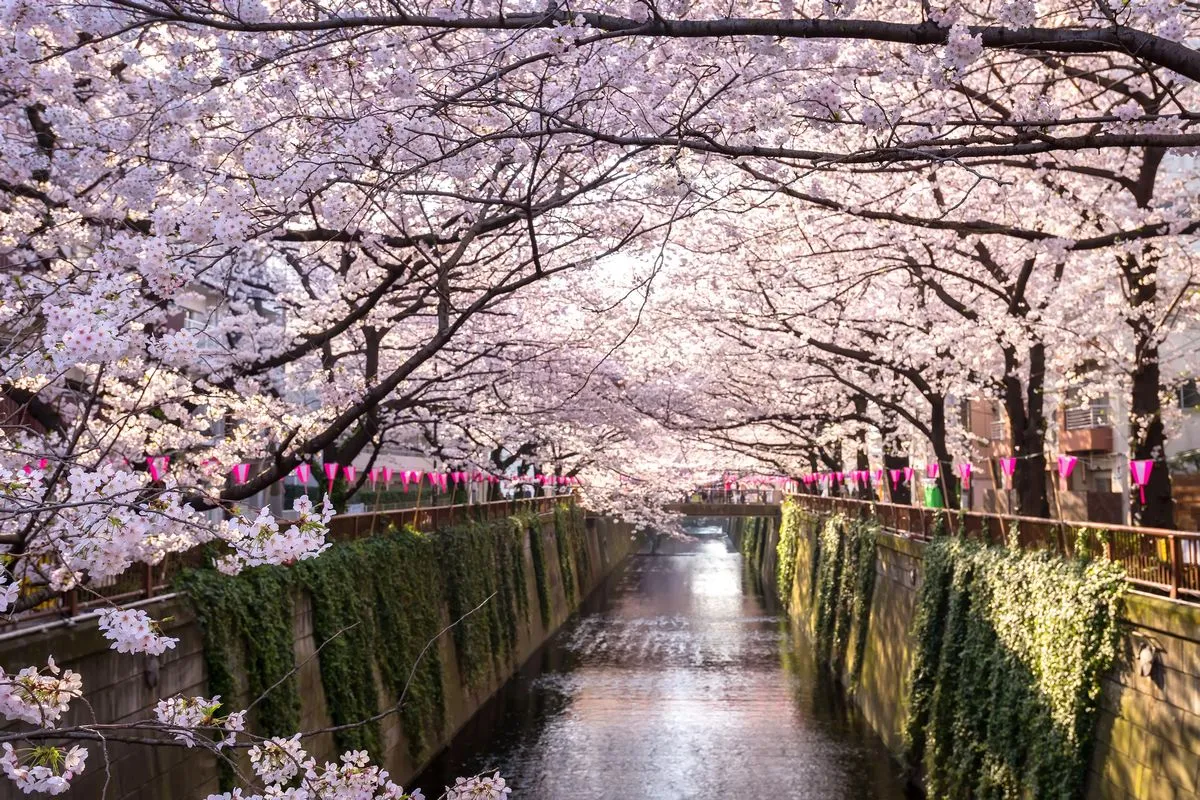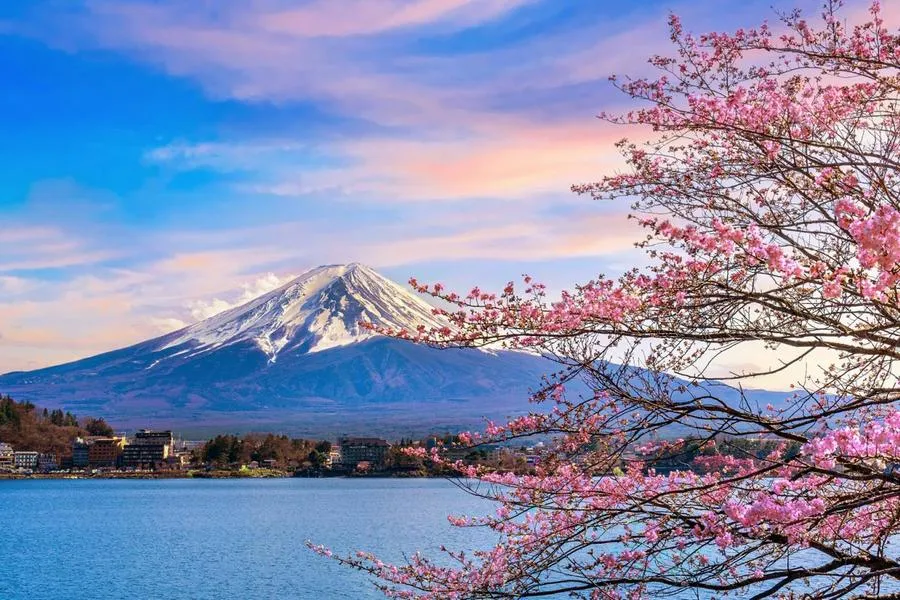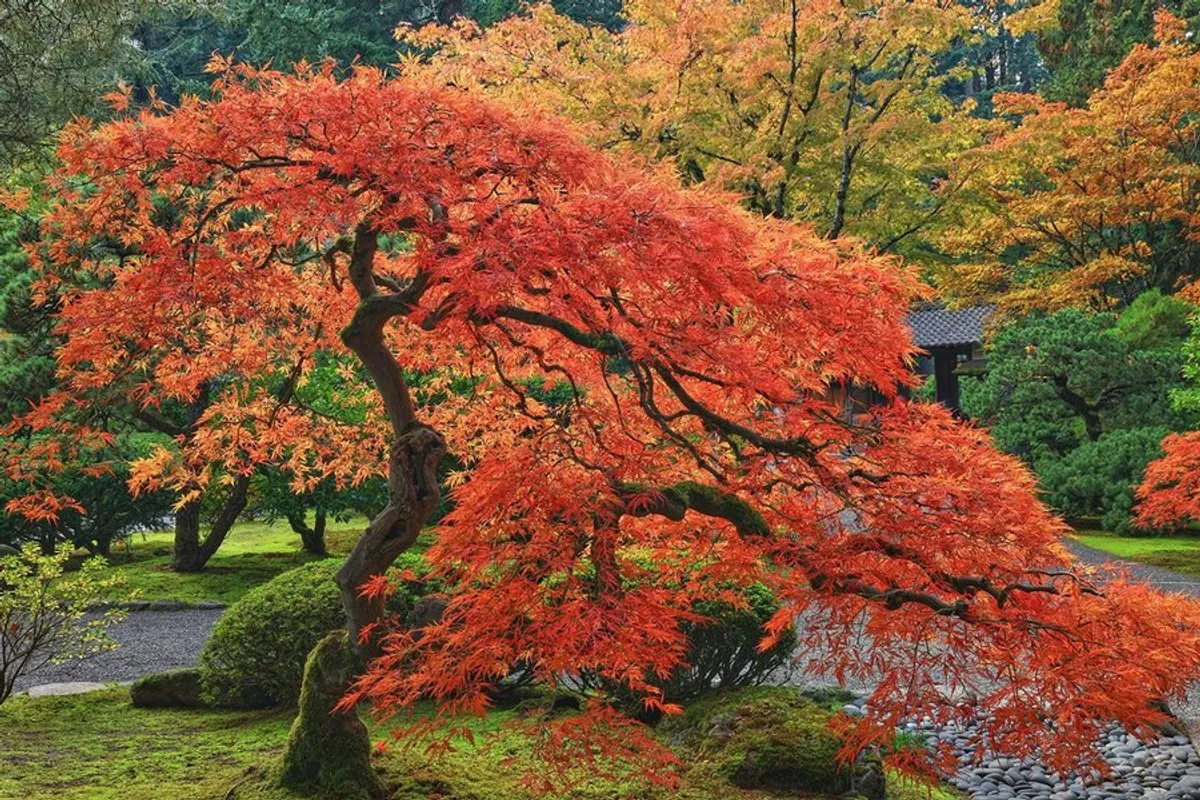Seasonal Travel: Best times to visit for cherry blossoms and autumn leaves
- By season
- 29 Aug, 2025
Japan’s beauty transforms dramatically throughout the year, but perhaps no seasonal changes are more celebrated than spring’s cherry blossoms (sakura) and autumn’s vibrant foliage (koyo). As a traveler planning your Japanese adventure, understanding the precise timing of these natural phenomena can make the difference between a good trip and an unforgettable one.
Cherry Blossom Season: Japan’s Pink Spring Symphony

When to Visit for Cherry Blossoms
Cherry blossom season follows a predictable pattern, sweeping across Japan from south to north:
Late March to Early April: The sakura season typically begins in southern regions like Kyushu and gradually moves northward. Major cities like Tokyo and Kyoto usually experience peak bloom during this period, making it the most popular time for cherry blossom viewing.
Mid-April: Northern regions like Tohoku and Hokkaido see their blossoms later, sometimes extending into May in the northernmost areas.
What many travelers don’t realize is that cherry blossoms only remain at their peak for approximately one week. This fleeting nature (known as “mono no aware” in Japanese philosophy) is precisely what makes them so cherished.
Top Cherry Blossom Destinations
Tokyo: Ueno Park, Shinjuku Gyoen, and the Meguro River offer stunning urban sakura experiences where ancient traditions blend with modern cityscapes.
Kyoto: The Philosopher’s Path and Maruyama Park transform into ethereal pink landscapes, set against the backdrop of historic temples and traditional architecture.
Hirosaki: The northern city’s castle grounds contain over 2,500 cherry trees, creating one of Japan’s most spectacular displays, typically in late April.
Yoshino: This mountain town in Nara Prefecture is considered Japan’s premier cherry blossom destination, with over 30,000 trees blooming in cascading waves up the mountainside.

Planning Tips for Cherry Blossom Season
Accommodations during peak cherry blossom season can book up to a year in advance, especially in tourist hotspots like Kyoto. Consider staying in nearby cities and making day trips if you’re planning last-minute.
The Japanese Meteorological Agency begins releasing “cherry blossom forecasts” (sakura-zensen) in January, which predict when blossoms will appear in different regions. These forecasts become more accurate as spring approaches.
Beyond viewing the blossoms, participate in hanami (flower viewing) parties, where locals gather under the trees for picnics and celebrations—an authentic cultural experience that deepens your connection to this seasonal tradition.
Autumn Leaves: Japan’s Golden and Crimson Fall

When to Visit for Autumn Foliage
Like cherry blossoms, autumn colors progress geographically:
Mid-October: The colorful transformation begins in Hokkaido and alpine regions like the Japan Alps.
Early to Mid-November: This is typically peak viewing time in Tokyo, Kyoto, and other central regions of Japan.
Late November to Early December: Southern areas experience their autumn colors, extending the viewing season.
The autumn color season lasts slightly longer than cherry blossoms, giving travelers more flexibility. However, the most spectacular displays often occur within a two-week window at any given location.
Top Autumn Foliage Destinations
Kyoto: Temples like Tofukuji, Eikando, and Arashiyama’s bamboo forest bordered by maple trees offer breathtaking autumn scenes illuminated during special evening viewings.
Nikko: This UNESCO World Heritage site north of Tokyo combines cultural treasures with natural beauty, particularly around Lake Chuzenji and Ryuzu Falls.
Hakone: Just a short trip from Tokyo, this hot spring resort area offers vibrant autumn views with the bonus of Mt. Fuji as a backdrop on clear days.
Miyajima: The iconic floating torii gate is complemented by the island’s maple-covered mountains in autumn, creating unforgettable photo opportunities.

Planning Tips for Autumn Foliage Season
While autumn may see fewer international tourists than cherry blossom season, domestic tourism remains high, especially during weekends. Consider visiting popular sites on weekdays to avoid crowds.
Many temples and gardens offer special night illuminations during autumn, creating magical experiences as colored lights highlight the vibrant leaves. These events often require advance tickets, so research and book ahead.
Comparing the Seasons: Which Should You Choose?
Both seasons offer unique experiences, and your choice might depend on several factors:
Temperature: Spring (10-20°C/50-68°F) offers mild weather ideal for long walks, while autumn (10-25°C/50-77°F) provides comfortable temperatures with less rainfall than spring.
Crowds: Cherry blossom season draws larger international crowds, while autumn sees more domestic tourism but can feel less congested at major attractions.
Photographic opportunities: Cherry blossoms create a dreamlike pink canopy, while autumn offers a richer color palette of reds, oranges, yellows, and greens.
Cultural experiences: Spring brings hanami parties and festivals, while autumn features harvest celebrations and seasonal foods like matsutake mushrooms and chestnuts.

Alternative Viewing Periods
If you can’t visit during peak seasons, consider these alternatives:
February: Early-blooming plum blossoms (ume) offer a similar pink display with fewer crowds.
May: Late-blooming cherry tree varieties and wisteria provide spectacular purple displays at gardens like Ashikaga Flower Park.
Early October or Late November: These “shoulder seasons” might not offer peak colors but still provide beautiful scenery with significantly smaller crowds.
Planning Your Seasonal Visit to Japan
Whether you choose cherry blossoms or autumn leaves, consider these practical tips:
-
Book accommodations at least 6-9 months in advance for prime viewing seasons.
-
Build flexibility into your itinerary when possible, as weather can shift peak viewing times by several days.
-
Consider less-famous viewing spots that locals frequent for more authentic experiences with fewer crowds.
-
Purchase a Japan Rail Pass before arriving to save on transportation costs as you follow the blossoms or autumn colors across regions.
-
Download weather and blooming forecast apps specific to Japan to track conditions in real-time.
The ephemeral nature of these seasonal displays embodies the Japanese concept of impermanence—a reminder to appreciate beauty in the moment. Whether you choose the delicate pink of cherry blossoms or the fiery palette of autumn leaves, a seasonal visit to Japan offers not just spectacular scenery but a deeper connection to Japanese culture and philosophy.
Keywords: Japan seasonal travel, cherry blossom viewing Japan, autumn leaves Japan, sakura season, koyo season, best time to visit Japan, hanami parties, Japan travel guide, Tokyo cherry blossoms, Kyoto autumn foliage, sakura forecast, Japan fall colors, seasonal Japan itinerary, Japan spring travel, Japan fall travel